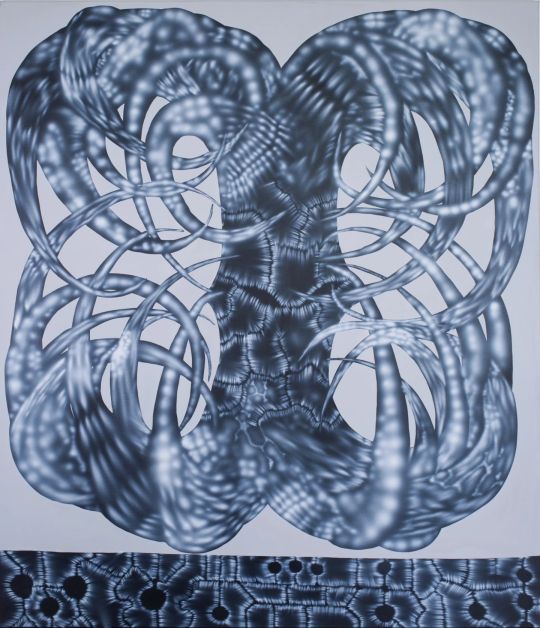#150 x 130 cm
Explore tagged Tumblr posts
Text

62 notes
·
View notes
Text

The Star Splitter - Emma Haworth ,2024,
British , b. 1970s
Oil on canvas, 150 x 130 cm.
537 notes
·
View notes
Photo

Dungeon Keepers I Stach Szumski Acrylic on canvas 130 x 150 cm
1K notes
·
View notes
Text

Eugen Gomringer - Untitled (Wind). 1953/90
silkscreen on cloth 150 x 130 cm
125 notes
·
View notes
Text

Helen Teede (Zimbabwean, b. 1988), Intimacy, 2020. Oil on canvas, 150 x 130 cm
179 notes
·
View notes
Text

Shara Hughes (American, 1981), I'm Tired, Harbor Me, 2009. Oil, acrylic and metallic paint on canvas, 130 x 150 cm.
205 notes
·
View notes
Text

Man Standing by the Pool, Ian Mwesiga, 2020
Oil on canvas 59 ⅛ x 51 ⅛ in. (150 x 130 cm)
#art#painting#ian mwesiga#contemporary art#2020s#21st century#21st century art#oil#ugandian#african art#black artists#artists of color
55 notes
·
View notes
Text

Marina Rheingantz, Maria Ruth. 2023
Oil on canvas, 150 x 130 cm
33 notes
·
View notes
Text

Peter Doig, Tour de Charvet, 1995. Oil on canvas, 150 x 130 cm.
38 notes
·
View notes
Text

Agnieszka Swoboda, Self-Portrait (no date) | Acrylic on Canvas , 130 W x 150 H x 4 D cm
"... heart pumps my blood, kidneys purify the emotions, face removed from the head for thoughts to flow like red, rapid stream..." via Artist's saatchi
https://palianshow.wordpress.com/2023/05/26/matkosc-eng/
#PolishWomenArtists #womensart #polishart #sztukakobiet #palianshow #agulaswoboda #art #sztuka #painter
3 notes
·
View notes
Text

Teresa Pągowska, Day 1 (from the series "Days") | 1978 oil on canvas | 150 x 130 cm.
11 notes
·
View notes
Text

Paco Pomet, El frente (Oil on canvas. 150 x 130 cm. 2022)
7 notes
·
View notes
Text

A Season for Everything - Emma Haworth , 2024.
British, b. 1970s
Oil on canvas , 150 x 130 cm.
361 notes
·
View notes
Text

Sophie von Hellermann (German b. 1975), Lilac, 2023. Acrylic on canvas, 130 x 150 cm. | 51 1/8 x 59 in.
#art#artwork#modern art#contemporary art#modern artwork#contemporary artwork#21st century modern art#21st century contemporary art#German art#modern German art#contemporary German art#German artist#German painter#female artist#female painter#woman artist#woman painter#female German artist#Sophie von Hellermann
2 notes
·
View notes
Text
Sciatt valtellinesi
Ingredienti (4 persone, 42 sciatt):
- farina 00 200 g
- farina di grano saraceno 130 g
- acqua frizzante 420 ml
- sale qb
- pepe qb
- casera 150 g
- asiago 150 g
- taleggio 150 g
- olio di semi di arachidi 1 L
Preparazione:
Versare le farine, il sale e il pepe in una ciotola, unire l' acqua frizzante (fredda) e mischiare con una frusta fino ad ottenere una pastella morbida. La pastella deve quindi essere messa in freezer a raffreddare per circa 10 minuti; questo accorgimento sarà utile per una frittura ottimale degli sciatt.
Tagliare a cubetti il casera (14 pezzi), l' asiago (14 pezzi) e il taleggio (14 pezzi). Indicativamente i cubetti di formaggio devono essere grandi 3 x 3 cm.
Scaldare l'olio di semi di arachidi fino ad una temperatura di 170 gradi C (per verificare la sua temperatura abbiamo usato un termometro da cucina).
Iniziare la cottura degli sciatt: immergere nella pastella sei cubetti di formaggio per volta, quindi con due cucchiai o un cucchiaio da gelato prendere un cubetto per volta con un po' di pastella ed immergerlo nell' olio bollente. Appena colato nell' olio bollente, il formaggio sarà inglobato dalla pastella che friggendo formerà una sorta di "guscio" attorno al formaggio fuso. Gli sciatt devono cuocere per circa 1 minuto, tempo durante il quale sarà utile muoverli con una schiumarola. Una volta che saranno cotti a puntino (controllare che la pastella sia di colore dorato), scolare gli sciatt con la schiumarola e disporli su un piatto coperto da carta assorbente; noi abbiamo disposto gli sciatt su tre piatti diversi a seconda del tipo di formaggio.
Presentazione: servire gli sciatt appena fritti e ben caldi su un letto di insalata tenera condita con un po' di sale e aceto bianco e gustare!

1 note
·
View note
Text
Price: [price_with_discount] (as of [price_update_date] - Details) [ad_1] Introducing the XJARVIS Bandana Head Wrap, a versatile accessory designed for comfort and functionality. Made from lightweight and breathable combed cotton, this bandana is perfect for both men and women. Its advanced absorbing and wicking properties ensure you stay dry during various activities like running, cycling, or hiking. The XJARVIS Bandana offers excellent protection against wind and dust, making it ideal for outdoor sports such as skiing or motorcycling. With over 12 different ways to wear it, including as a neck gaiter, headband, face scarf, or beanie, it adapts effortlessly to your needs and style. Whether you're into yoga, biking, or simply enjoying a music festival, this bandana is a stylish and practical choice. Its one-size-fits-most design ensures a comfortable fit without feeling tight or uncomfortable. Stay cool and protected with the XJARVIS Bandana Head Wrap, your go-to companion for all your outdoor adventures. Product Dimensions : 1 x 10 x 13 cm; 150 g Date First Available : 8 June 2023 Manufacturer : Xjarvis ASIN : B0C7H5134F Item model number : XJ-BND-02-PL-B-5 Country of Origin : India Manufacturer : Xjarvis, 4th Floor, Unit No. 420, Pearls Omaxe, Plot No. B- 1, Netaji Subhashplace, Pitampura, North West Delhi, Delhi, 110034 Packer : Xjarvis, 4th Floor, Unit No. 420, Pearls Omaxe, Plot No. B- 1, Netaji Subhashplace, Pitampura, North West Delhi, Delhi, 110034 Importer : Xjarvis, 4th Floor, Unit No. 420, Pearls Omaxe, Plot No. B- 1, Netaji Subhashplace, Pitampura, North West Delhi, Delhi, 110034 Item Weight : 150 g Item Dimensions LxWxH : 10 x 100 x 130 Millimeters Net Quantity : 5.00 count Generic Name : Bandana [ad_2]
0 notes